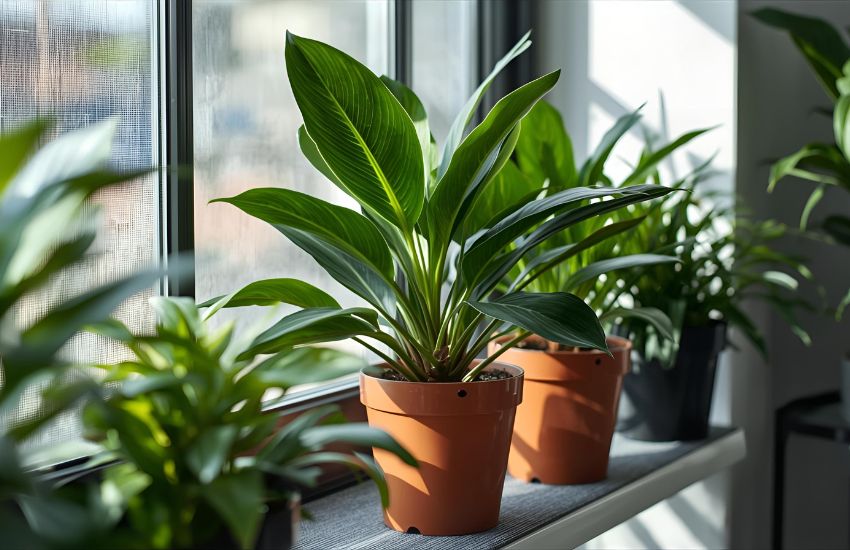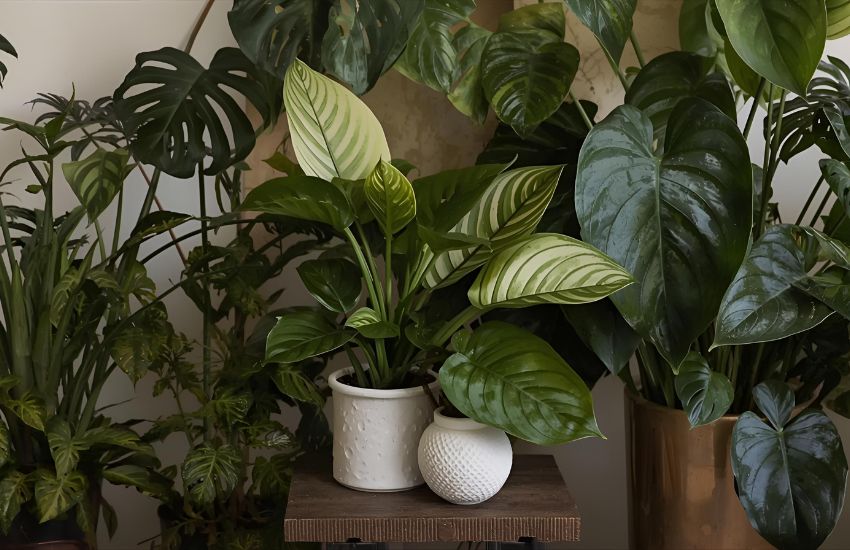If you’re searching for a houseplant that blends modern design with natural elegance, the Calathea Network Plant—also known as Goeppertia kegeljanii—is a standout choice. With its striking mosaic pattern and vibrant green foliage, this tropical beauty elevates your indoor space while demanding care practices that match its refined nature.
Calathea Network Plant Care: Grow Calathea Musaica with Modern Indoor Methods by providing bright, indirect light, high humidity, and consistent warmth. Use coco coir-based soil for proper drainage and avoid soggy soil. Keep the leaves dust-free and watch for pests like spider mites. This stunning foliage plant thrives with gentle care and a stable indoor environment.
In this blog, you’ll explore modern indoor methods to grow and maintain your Calathea musaica with confidence. From watering schedules to light placement, from preventing brown edges to ensuring the right temperature, we’ll guide you step by step toward lush, healthy growth. Let’s dive into expert care for this dazzling plant.
Calathea Network Plant Care: Light, Water, Humidity, and Temperature Tips

Light Needs
- Place your network plant in bright, indirect light.
- Avoid direct sunlight, especially from south-facing windows, as it can cause brown leaf tips.
- Filtered light helps preserve the plant’s delicate variegation and prevents fading.
Watering Tips
- Keep the soil evenly moist but never soggy.
- Use filtered, room-temperature water to protect roots.
- Ensure the potting mix has excellent drainage to avoid root rot.
- Water more frequently in spring and summer when the plant is actively growing.
Humidity Requirements
- High humidity is essential to prevent leaf damage.
- Use a pebble tray, humidifier, or group plants together to increase humidity.
- Dry indoor air may lead to curling or brown leaf edges.
Temperature Conditions
- Ideal temperatures range between 65–80°F (18–27°C).
- Keep the plant away from drafts, heaters, or cold windows.
- Move the plant if exposed to sudden temperature changes.
Cleaning and Pest Management
- Clean leaves regularly with a damp cloth to remove dust and maintain health.
- Check often for pest issues such as spider mites or mealybugs.
- Treat any infestation promptly with neem oil.
Fertilization
- Feed using a balanced fertilizer at half strength during spring and summer.
- Avoid overfeeding, which can harm roots and reduce leaf quality.
Additional Care Notes
- The name Calathea musaica reflects its unique mosaic-patterned leaves.
- As a type of prayer plant, it may fold its leaves at night.
- Stay alert to common problems with Calathea, including rot, pests, and environmental stress.
- With consistent calathea musaica care, your musaica network will thrive indoors.
Common Problems with Calathea Musaica: Soil, Pests, and Leaf Scorch

Soil Issues and Drainage Imbalance
To help your Calathea musaica flourish, it’s essential to maintain the right soil structure. The network prefers a well-aerated mix that supports both retention and drainage. A poor-quality substrate can lead to overwatering issues, root suffocation, and fungal diseases. Enhance your soil by blending peat-based medium with additives like perlite and moss, which improve airflow and water balance. If your plant shows signs of stress—such as drooping or yellowing leaves—it may be time to repot using a fresh, breathable mix that meets the plant’s moisture needs without becoming waterlogged.
Pest Infestations and Environmental Triggers
Although generally resilient indoors, Calathea musaica can still suffer from pests such as spider mites, mealybugs, and fungus gnats—especially in dry or stagnant conditions. These pests often hide on the undersides of leaves or in overly damp soil. Regularly inspect your plant, clean the foliage, and use natural remedies like neem oil if an infestation arises. Avoid placing your plant near drafty windows or vents, as inconsistent air currents can weaken its defenses and increase susceptibility to pest problems.
Leaf Scorch and Light Stress
Calathea musaica’s delicately patterned leaves are sensitive to harsh conditions. Exposure to much direct sunlight can cause brown spots, crispy edges, and scorched foliage, especially on the upper leaves that receive the most light. Always provide bright but indirect light, and consider filtering sunlight with sheer curtains if your plant is near a strong light source. If light damage occurs, you may need to move the plant slightly to reduce stress and allow for recovery. Remember, Calathea plants prefer a stable, protected setting with gentle light and consistent humidity.
Conclusion
In conclusion, growing a healthy Calathea Musaica requires attention to both its environmental and soil needs. Use coco coir as part of a well-draining potting mix to prevent soggy soil, which can harm the stem and roots. Ensure consistent warmth and avoid cold drafts to support strong, thicker leaves and vibrant foliage. Letting the soil to dry too much between waterings can also be harmful, so aim for slightly moist conditions while maintaining the humidity around the plant. Keep an eye out for pests like spider mites or aphids and treat them promptly with insecticidal soap. Finally, always place your plant in a spot with diffuse light to mimic its natural tropical environment.
If you’re ready to elevate your indoor gardening game, start caring for your Calathea Musaica the modern way—combine nature with knowledge. Follow our expert guides and create the thriving green space you’ve always envisioned!
Frequently Asked Questions (Calathea Network Plant Care: Grow Calathea Musaica with Modern Indoor Methods)
How do you care for Calathea musaica network?
Calathea musaica, also known as the Network plant, thrives in bright, indirect light and high humidity. Keep the soil consistently moist but not soggy, using filtered or distilled water to avoid leaf damage. Maintain temperatures between 18–27°C and avoid drafts. Fertilize monthly in spring and summer with a balanced, diluted fertilizer for healthy growth.
What is the Calathea network prayer plant?
The Calathea Network, also known as Calathea musaica, is a tropical houseplant admired for its striking mosaic-patterned leaves resembling a digital network. Native to Brazil, it thrives in warm, humid environments with indirect light. As part of the prayer plant family, its leaves move up at night. It’s a popular choice for decorative indoor greenery.
What is the difference between Calathea network and musaica?
Calathea network and Calathea musaica are actually the same plant, scientifically known as Goeppertia kegeljanii. The term Calathea network is a trade name highlighting its unique, mosaic-like leaf pattern, while musaica refers to its botanical variety. Both describe the same species, prized for its intricate, net-like foliage and tropical indoor appeal.
How to care for a calathea plant indoors?
Calathea plants thrive indoors with bright, indirect light and high humidity. Keep soil consistently moist but not soggy, using filtered or distilled water. Maintain temperatures between 18–27°C, avoiding drafts. Mist leaves or use a humidifier for best growth. Fertilize monthly in spring and summer with a balanced liquid fertilizer for healthy, vibrant foliage.
